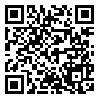Volume 8, Issue 3 (2020)
CLRJ 2020, 8(3): 106-128 |
Back to browse issues page
Download citation:
BibTeX | RIS | EndNote | Medlars | ProCite | Reference Manager | RefWorks
Send citation to:



BibTeX | RIS | EndNote | Medlars | ProCite | Reference Manager | RefWorks
Send citation to:
REZAPOUR R, Narimani E. Gypsy's Figure in Iranian and French Literature. CLRJ 2020; 8 (3) :106-128
URL: http://clrj.modares.ac.ir/article-12-32575-en.html
URL: http://clrj.modares.ac.ir/article-12-32575-en.html
1- Allameh Tabataba'i University
2- Allameh Tabataba'i University , esfandiyar.n47@gmail.com
2- Allameh Tabataba'i University , esfandiyar.n47@gmail.com
Abstract: (2526 Views)
Gypsies are a wandering and landless people who are commonly known around the world to represent not just nomadism but also festive dancing and singing. From what can be gathered from literary and historical sources, the Romani people first came to the land of Iran during the time of the Sasanids, and their first visit to France came about the fourteenth century. In mid-eighteenth century and during the early decades of the nineteenth century, bohemian characters were considered to be influential in French literature. In those early texts, French and Iranian writers and poets referred only to tales about the bohemian origin, past, and their arrival to these lands. But in time poets and writers began to attend to and reflect on other aspects of this community’slifeworld. Thisstudy, afterabriefsurveyofhowbohemian people emerged as a distinct community in France and Iran, will explore the representation of bohemian people in French and Iranian literatures. From among their many attributes, this study pays particular attention to salient features of their way of life, such as minstrelsy, music and song composition, and their landlessness. Finally, an attempt will be made, following an analysis of Romani people from the socio-cultural perspective, to provide an answer to the question of how French and Iranian cultures and literatures have represented and developed the image of the gypsy.
Article Type: Original Research |
Subject:
The Relationship of Persian Language and Literature with the Language and Literature of European Nations (Impact, Effect and Similarity)
Received: 2019/05/4 | Accepted: 2020/09/21 | Published: 2020/09/21
Received: 2019/05/4 | Accepted: 2020/09/21 | Published: 2020/09/21
Send email to the article author
| Rights and permissions | |
 |
This work is licensed under a Creative Commons Attribution-NonCommercial 4.0 International License. |








